In Fortnight, a tale of the solitary suffering of impossible love, a tale involving some truly unnecessary violent fantasies that don't seem to fit easily with friendship bracelets, glitter and rainbows, Taylor Swift laments, "All my mornings are Mondays, stuck in an endless February".
If only that February were February 2025 Taylor!!!
For then the wealth of new architecture and design exhibitions opening would not only lift your spirits, but through the stimulation and exploration thereby unleashed would allow you to move on from your cheating husband, listless love interest, and the thoroughly unnecessary violent fantasises.
From that wealth of new exhibitions, and regretting that February 2025 won't be endless thereby denying us the opportunity to list all the newbies, our five recommendations for February 2025 take us all to Ulm, Bregenz, ‘s-Hertogenbosch, Karlsruhe and Stockholm.......
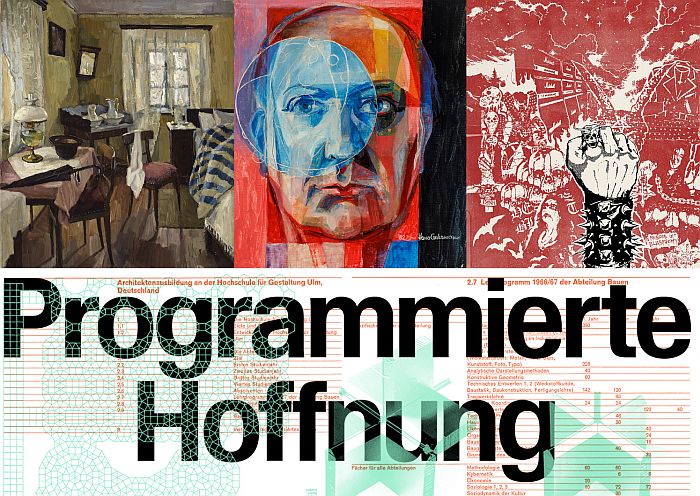
The Hochschule für Gestaltung, HfG, Ulm was founded in the early 1950s in context of, and as an approach to helping, the rebuilding of democracy in the, then, West Germany following the NSDAP dictatorship and their imperialist warmongering. And that not without reason and intention, for amongst the many tools any society has at its disposal to strengthen its democracy are inarguably architecture and design.
Yet while the later has received much popular attention since the HfG Ulm closed in 1969, not least through the personages Otl Aicher or Hans Gugelot, two key protagonists of design in Ulm, of design in West Germany, the former has received much less attention.
Until now.
Based on a research project undertaken by the HfG-Archiv in cooperation with the TU Darmstadt and the Goethe-Universität Frankfurt, Programmed for Hope promises to explore not only the development of architecture teaching and practice at the HfG Ulm from its origins under founding rector Max Bill over contributions from the likes of, and amongst others, Konrad Wachsmann, Yona Friedman, Ray and Charles Eames or Max Bense, a mix of individuals from a range of disciplines that also helps reinforce how architecture developed in the 1950s and 60s, and that the HfG Ulm was very much an active component of those global developments, but also to explore how the work of HfG Ulm staff and students helped contribute to the physical building of West Germany and the metaphysical construction of a new, post-NSDAP, West German society, that, arguably, primary founding principle of the HfG Ulm.
And as such Programmed for Hope should allow for more nuanced appreciations of the HfG Ulm, its relevance and legacy, while also allowing for more nuanced appreciations of developments in, and the development of, West Germany and the role of architecture in those developments, good and bad.
Programmed for Hope: Architectural Experiments at the HfG Ulm is scheduled to open at the HfG-Archiv Ulm Am Hochsträß 8, 89081 Ulm on Saturday February 15th and to run until Sunday October 26th. Further details can be found at https://hfg-archiv.museumulm.de
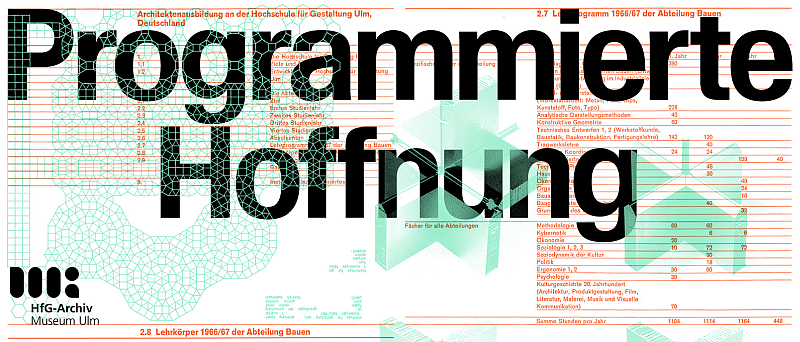
Born in Weißenfels, near Leipzig, on October 15th 1924, Hasso Gehrmann studied art history and philosophy in Heidelberg and art in Mannheim and Darmstadt, but, arguably, made a greater name for himself as a designer. Or perhaps more accurately, had a longer career as a designer. If a career that today is largely shrouded by the mists of time.
By way of seeking to clear those mists, and celebrating what would have been Gehrmann's 100th birthday, the Vorarlberg Museum promise a tour through and across the five decades of Gehrmann's work; a journey that while we are admittedly unsure exactly how it will be structured, we have as yet seen no advance, teaser, text, will, we imagine, include a stop at his tenure in the second half of the 1950s with AEG in Frankfurt, his first professional design job, and where he developed a range of domestic electrical goods, including the Vampyrette vacuum cleaner. Objects for AEG that, in may regards competed with those of a Braun for both customers attention in the immediate post-War decades, and recognition as meaningful positions for the, still relatively, fledgling West Germany.
And, we imagine, will, must, also discuss his 20 years between 1961 and 1981 as Head Designer with Bregenz based electric household goods manufacturer Elektra Bregenz, a leading protagonist in the rise of electric household goods in the contemporary Austria, a position that saw Gehrmann win the inaugural Adolf Loos Staatspreis Design, the Austria Design Prize, in 1962 for his deLuxe fridge model and also saw him develop, in context of his Totalen Wohnung project, the so-called Elektra Technovision, a project that is often described as the world's first fully automatic kitchen: essentially a contemporary kitchen island which could be played like piano, or more accurately like a synthesiser with pedals, buttons and touchscreens, and within which all necessary processes for a functioning kitchen were contained, hidden, retractable, manoeuvrable, and all powered by vertical and horizontal hydraulic systems. Which, yes, is a horribly insufficient manner to describe Gehrmann's contribution to kitchen design, but must suffice for it needs a post in itself to fully describe what it was and why it is an was important. Here alone we have space to note that it never got beyond the prototype.
And, we imagine, will, must, also discuss Gehrmann's art, that genre in which not only his career began, but also stimulated and informed much of the theory that defined his career, and also his philosophy, for all his long-term considerations on the problems and promise of subjective logic. And thereby should not only provide for an introduction to a highly informative and instructive protagonist of 20th century design, but also help elucidate how the continual interplay between art, design and philosophy, between the artist, the designer, the philosopher of the title, helped Gehrmann to become that informative and instructive protagonist.
Hasso Gehrmann (1924–2008) Artist, Designer and Philosopher is scheduled to open at Vorarlberg Museum, Kornmarktplatz 1, 6900 Bregenz on Saturday February 22nd and to run until Sunday August 17th. Further details can be found at www.vorarlbergmuseum.at
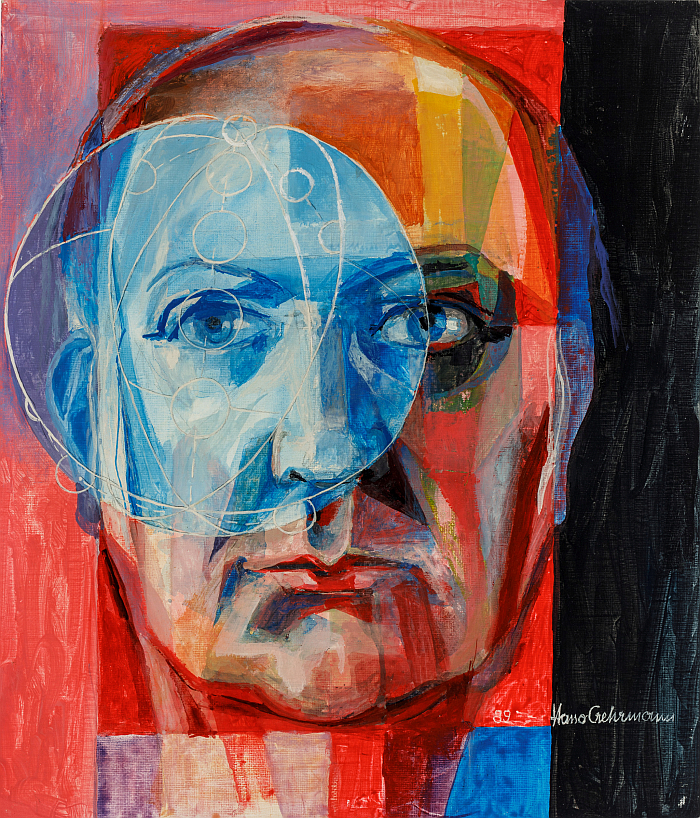
Kraftwerk's Trans-Europa Express famously left for Paris in the morning and had its guests in Vienna's cafes by late-night.
Design Museum Den Bosch's Trans Europa Design Express promises an equally rapid and geographically extensive tour, though rather than taking you anywhere it is bringing Europe to ‘s-Hertogenbosch: more specifically bringing objects from the collections of Design Museum Brussels, Designmuseum Danmark, MUDAC Lausanne and Triennale Milano to ‘s-Hertogenbosch where they will be displayed alongside items from the Design Museum Den Bosch's own collection. Five collections in one location.
What one can learn therefrom about design, design (hi)story, design practice, Europe's myriad design dialects, is another question: for whether deliberately or by accident Design Museum Den Bosch are not giving away much information on why the four partners were chosen, how the four partners selected which objects to supply, how the presentation will be arranged, etc.
But that is potentially of secondary importance, for as Design Museum Den Bosch do state a key intention with Trans Europa Design Express is instigating a process of "thinking about the design museum of the future", a thoroughly excellent idea of which highly approve, and one in which the hows, whys, wherefores of that which is presented, a questioning of the frameworks, the decisions made, the motivations responded to in assembling the presentation, will be more important than the works per se, enabling as it will, should, insights into potential, possible, ¿inevitable?, inherent biases, imbalances, prejudices, skews, et al in both the collecting that has lead to the collections as they exist, and also how design museums interact with, understand, use, their own collections. A questioning of hows, whys, wherefores etc that should enable diffentiated approaches to meaningful, responsive future design museums.
Thus in advance it is not possible to predict where Design Museum Den Bosch's Trans Europa Design Express will take us all, we can alone be confident that, unlike Kraftwerk's Trans-Europa Express, it won't take us all
Back to Düsseldorf City, Meet Iggy Pop and David Bowie
Sadly.
Trans Europa Design Express – A journey through five design collections is scheduled to open at Design Museum Den Bosch, De Mortel 4, 5211 HV ‘s-Hertogenbosch on Saturday February 22nd and to run until Sunday May 25th. Further details can be found at https://designmuseum.nl
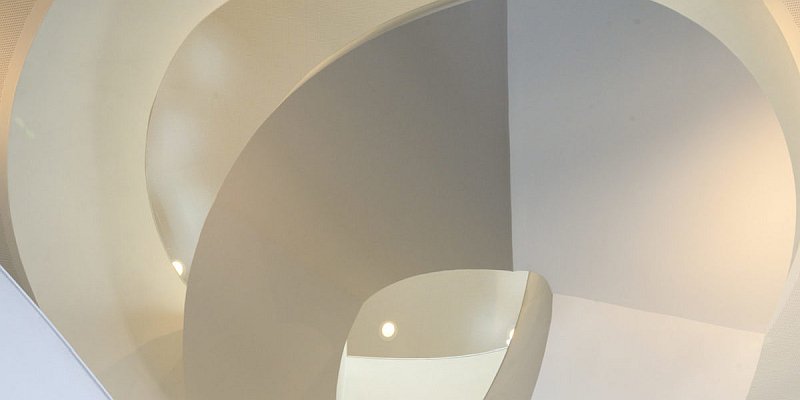
Technically, officially, Mein Raum. Mehr als vier Wände, My space. More than four walls, is an exhibition for children. But that shouldn’t' stop adults viewing it. In many regards, we'd argue, demand, adults also view it.
Staged in and by Kunsthalle Karlsruhe's Jungen Kunsthalle, an institution established in 1973 as one of the first art museums specifically for younger visitors, Mein Raum. Mehr als vier Wände promises to explore and discuss questions such as, for example, What makes a room a room? What makes it my space? What makes it a place where I feel comfortable? via and in company of a presentation featuring a selection of, let's say, older artworks from the Kunsthalle Karlsruhe's collection and works by contemporary artists incuding, for example, Anna Lea Hucht, Susanne Kutter or Menno Aden; a presentation that is intended to stimulate the viewer to question the myriad components and relationships that unite and define any interior space, to view interior space actively not passively.
That thing we're all discouraged to do today through the consumption of (invariably very similar) interiors via the taste and style mediators of social media, marketing, advertising led magazines, et al and the ubiquity of interior t***** we are advised to follow for fear of mis-staging our interiors. "Why are people with so-called 'good taste' so unanimous about what is good?", asked once a Verner Panton.1 As we all should also ask when consuming interiors. But rarely do.
A Verner Panton who also asked, in terms of interiors, "Is comfort and well-being an intellectual or an emotional experience?"2
If its "intellectual" it can learned by heart through the media, if its a "an emotional experience" it comes from within us all, individually, as a response to a moment.
Rephrasing Panton: Do we want comfort and well-being to be an intellectual or an emotional experience?
We'd argue for the latter and therefore that we all invest more time and effort in independently developing our faculties, our receptiveness, our feeling, for interiors.
And for all would argue that children aren't taught what is a 'good' interior, what is 'comfortable', what is 'desirable', but are challenged to define that for themselves. And to continually challenge that definition as they progress through life. Mein Raum. Mehr als vier Wände sounds an excellent place to start.
And an excellent place for adults to start freeing ourselves from our many interior crutches.
Mein Raum. Mehr als vier Wände opened at the Jungen Kunsthalle, Hans-Thoma-Straße 4, 76133 Karlsruhe on Saturday February 1st and is scheduled to run until Sunday September 21st. Further details can be found at www.kunsthalle-karlsruhe.de
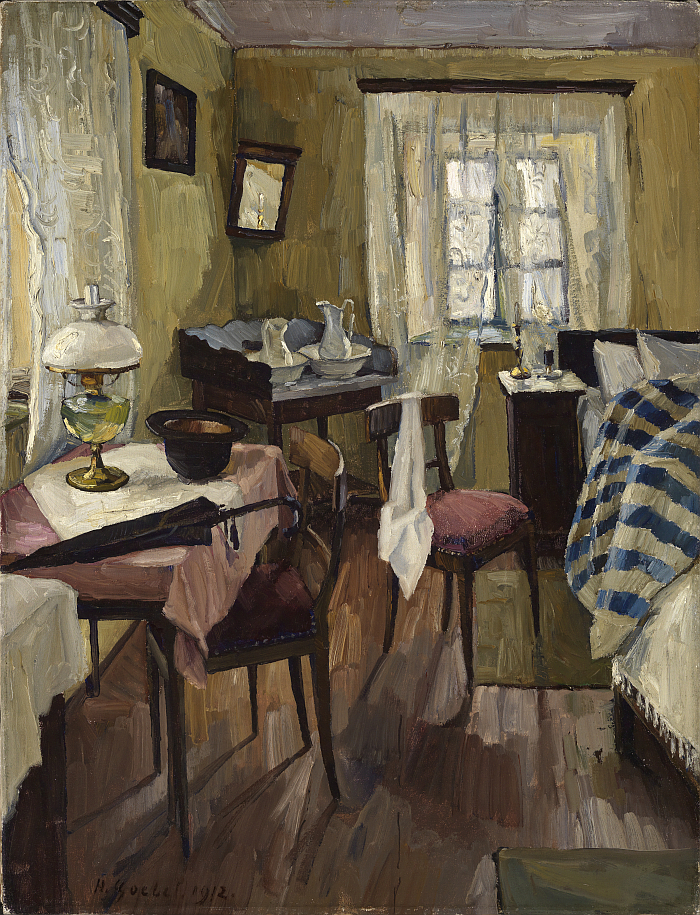
Sweden is a lot of things. Sweden is forests, Sweden is lakes, it's elk, red houses, wooden furniture, IKEA mugs and muesli bowls, Scania trucks, ice hockey, high quality glassware, Vikings, Marabou, Front Design, etc, etc, etc.
Sweden is also, and with apologies to Denmark, Finland and Norway, some of the heaviest, deepest, dirtiest, hardest of metal.
An integral component of contemporary Swedish society Kulturhuset Stadsteatern aim to chart from the 1970s until today, a journey that for all it promises to open with the likes of Yngwie Malmsteen and Europe should quickly move into the numerous interlinked genres of contemporary metal, a journey, as the curators note, that began as an underground, counter-culture movement, fuelled by a DIY ethos, that has become an important economic factor in the contemporary Sweden. And a journey that also neatly coincides with the decline in relevance of the Folkhemmet, that concept of Sweden as a common home that defined the social state in Sweden until, against the background of the rise neoliberalism and global capital in the late 1970s, the Folkhemmet began to crumble.
A decline in relevance of the Folkhemmet that has and had an important impact on all aspects of Swedish society and culture, has been an important driver of developments in, for example, glassware, architecture, furniture design, or music, in terms of the latter not least as exemplified by the rise of metal; a metal that for it has its origins in the industrial decline of northern England, found fertile ground in a Swedish youth searching for itself outwith the Folkhemmet their predecessors had relied on.
No, you don't have to like the music. Certainly don't. With music as with art, literature, design, all other cultural expressions, each and every one of us should, must, find that which motivates, inspires them, that which communicates with them, you don't have to like everything; however, it is important to engage with all expressions of any and all cultural good if you are to develop a comprehensive appreciations of where we are, how we got here, and how we can move on.
Comprehensive appreciations beyond the easy cliche and stereotype. Comprehensive appreciations that we need now, arguably, more than ever.
And who knows, you may also discover your new favourite band.......
Total Metal is scheduled to open at Kulturhuset Stadsteatern, Sergels Torg, 111 57 Stockholm on Thursday February 13th and run until Sunday September 21st. Further details can be found at https://kulturhusetstadsteatern.se
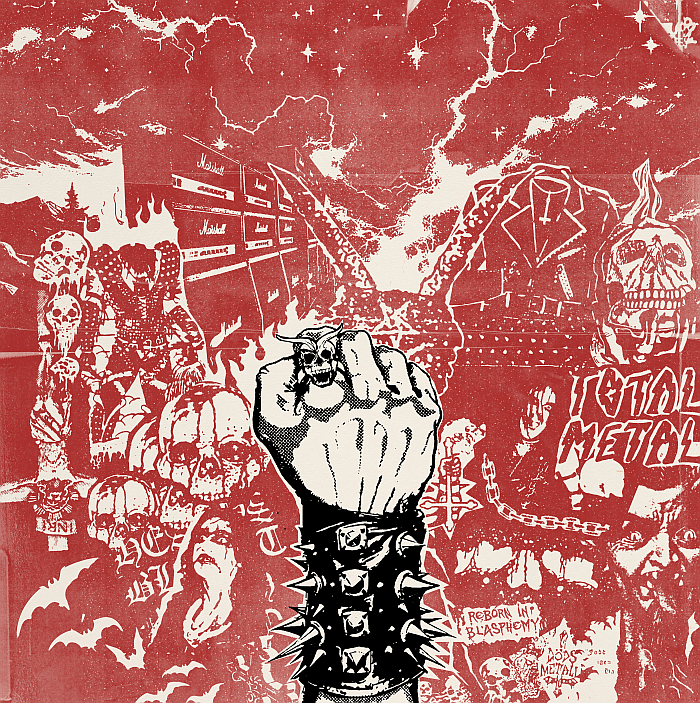
1Verner Panton: Meine Design-Philosophie,BÜROszene, Vol 47, Nrs. 1–2, 1995, our translations of the original German.
2ibid.